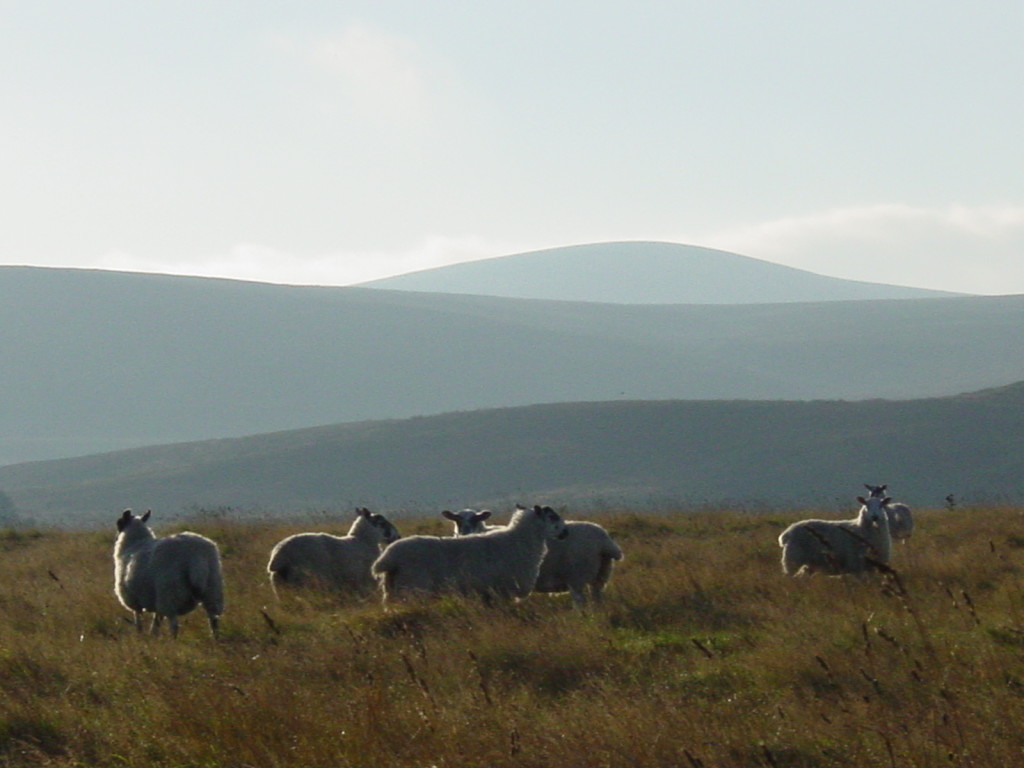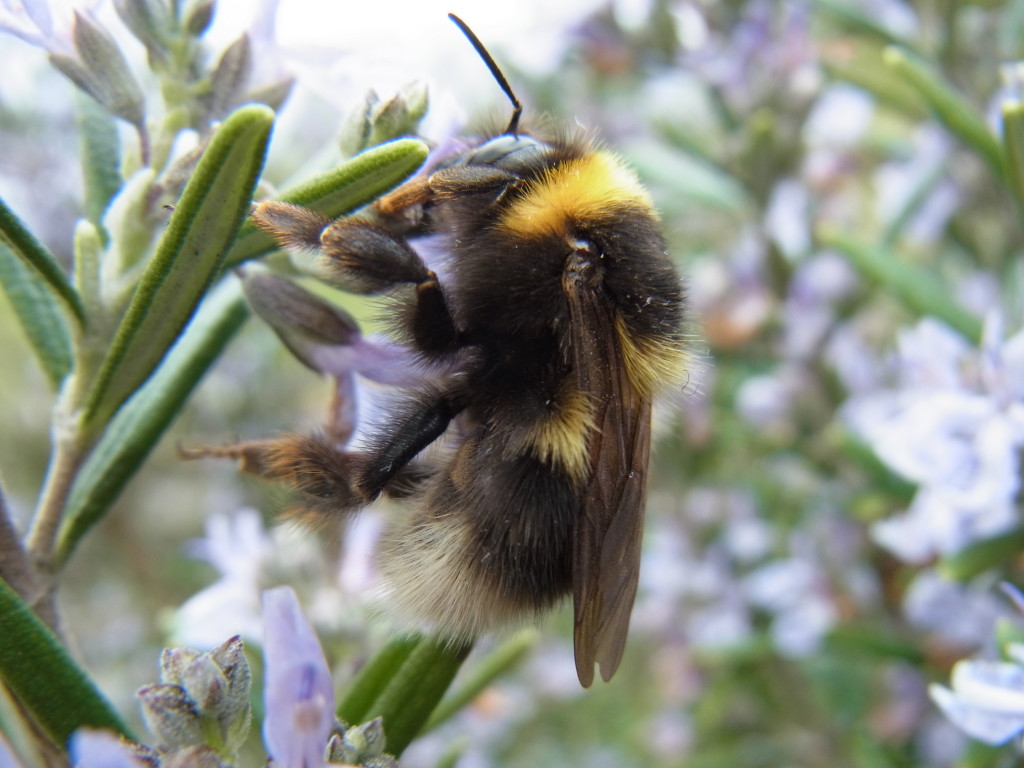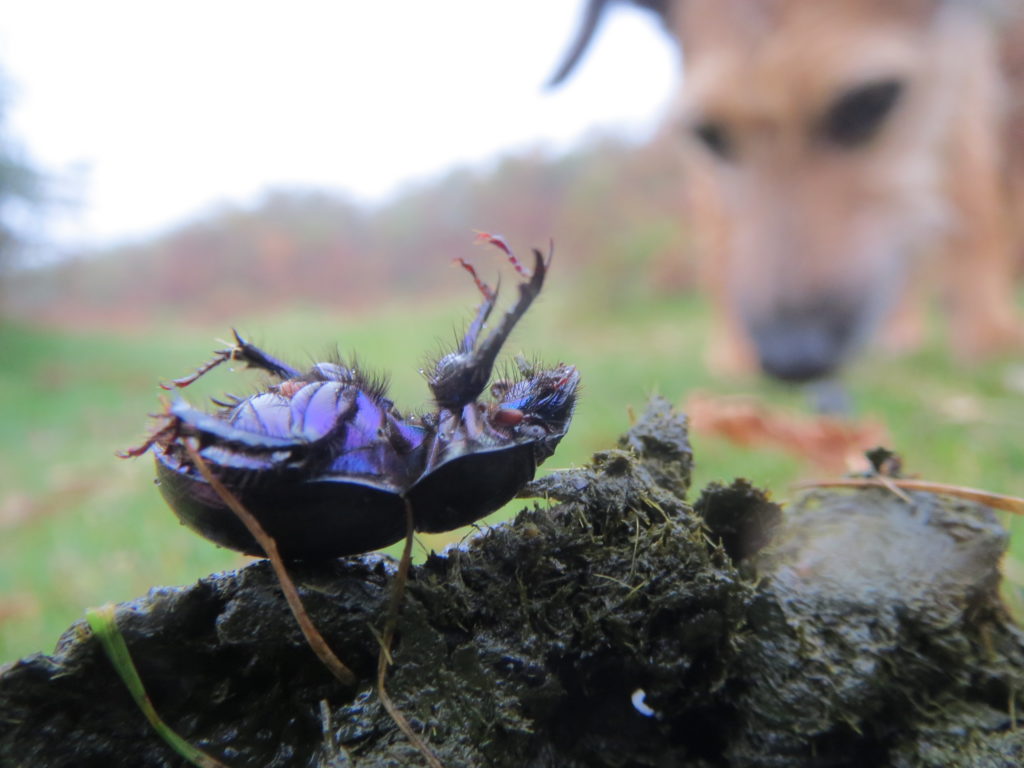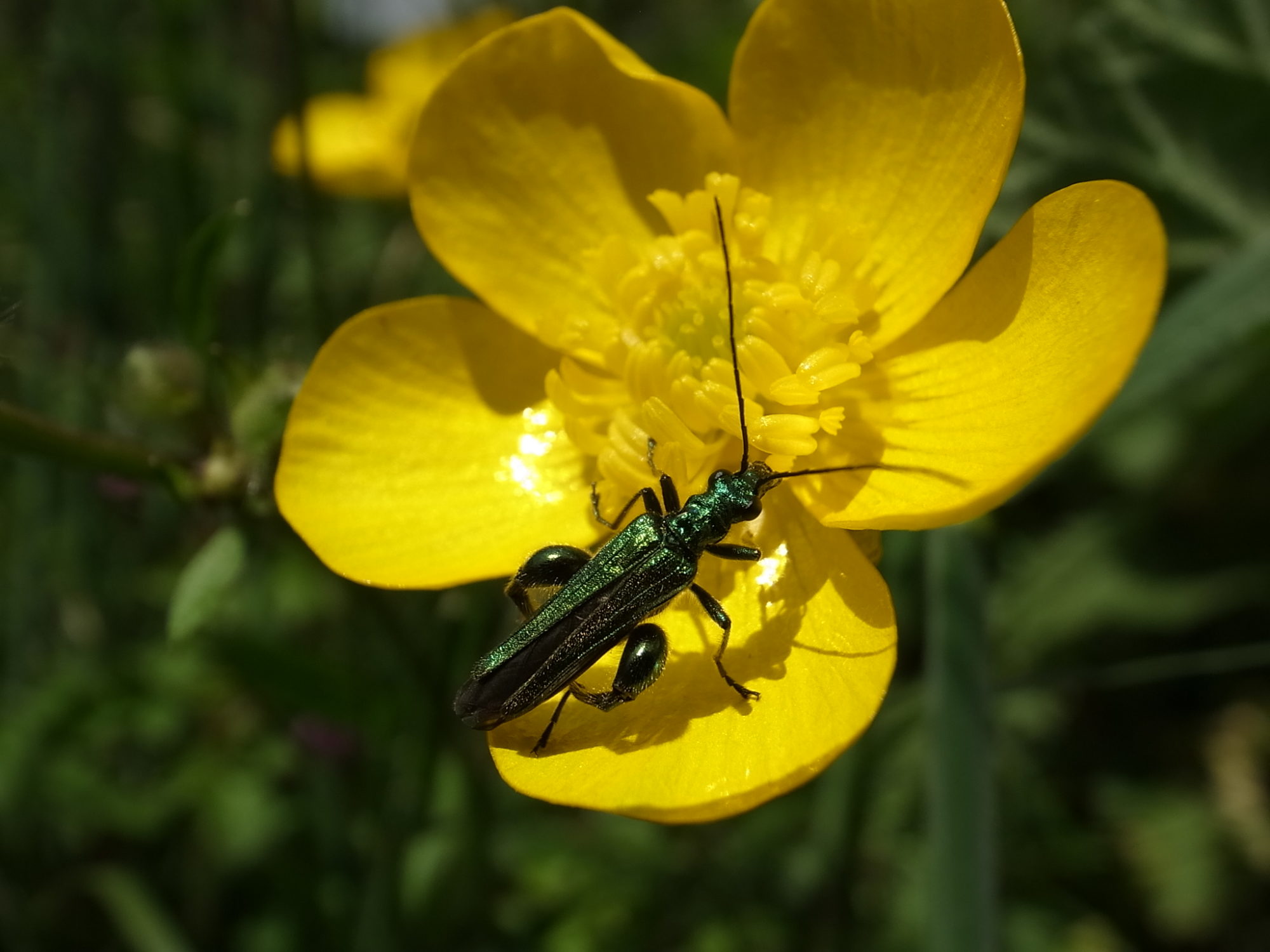Advances in vet and human medicines may have unintended consequences for the environment.
A few years ago a pest controller told me how lucky I was to live in one of the UK’s most rural counties (Powys). He added that, due to the prevalence of livestock farming, worm parasites were a problem for not only cattle, dogs and sheep. But also humans. If you’ve ever prepared wild meat or fish, you’ll realise how reliant we are on vet medicines to keep parasites at bay.
Prize medicine
Much of our ability to do this is down to one of the Nobel Prize winner for medicine this year (2015). They discovered the compound avermectin. The active ingredient behind modern worming pesticide (or perhaps less ‘Silent Spring’, let’s call them medicines) and used extensively by livestock farmers today. (and for Covid-19 it seems)

The same week, during a walk on the hill, I noticed an excessive number of dead dung beetles lying around sheep and pony manure. Had the beetles – like wild bumblebees – suddenly been overcome by the number of mites attached to their body? Or had they ingested pesticide-heavy doses of dung?
Pour on pesticide
We take for granted that pesticides are ostensibly there to help us profitably produce affordable food. Whether via increasingly unfashionable though effective (soon to be banned?) neonicotinoids. Or the regular use of ivermectin to ensure efficiency in livestock production. Without too much thought on the impact of excessive applications may have on flora or fauna.

Sub-lethal weapon
Sub-lethal is an expression used by scientists to say that something has an effect on something without killing it. Some of us drink coffee. But if we tank through 42 espressos, it could kill us. The same applies to still active pesticides excreted by livestock and consumed by dung beetles. Some of the beetles I saw on the hill, if not almost dead, looked decidedly wobbly.

Both Farmers Weekly and Countryfile have dwelt on this matter but hey, pollinators are more sexy than dung-eaters.
Moon shine beetles
Two years ago the winner of the Ig Nobel prize – a light hearted engaging take of the Nobel Prize – studied ‘Dung beetle use of the Milky Way for orientation‘. Perhaps the next time we pop a pill for a headache or treat our pet and livestock for worms, we think about dung-dealing invertebrates not losing their way.
Addendum: another blog on insects here. Updated Oct 2021.

the impact of avermectins on dung fauna and their capacity to decompose livestock droppings has been known for over 20 years. Seminal work was carried out by Davy McCracken and Eric Bignal, founders of the European Forum on Nature Conservation and Pastoralism, in 1990. This note was published in 1991
http://jncc.defra.gov.uk/page-2736
Use of Avermectins has been restricted on nature reserves and subject to consent by Nature Agencies on SSSIs for several decades.
Like neonicotinoids, these pesticides (or medicines – the distinction is often a grey area) are valued by farmers, despite their environmental impact. At least avermectins, unlike neonics, do not end up as persistent, ubiquitous ecotoxins.
In a similar vein, the relationship between increasing numbers and types of human allergies and the absence of parasites such as worms from our own modern ecology, suggests that our instinctive repulsion to such endoparasites blinds us as to their ecological (and immunological) roles.
Toxic dung is certainly a big issue £6.2 million/yr if the figures are right. http://onlinelibrary.wiley.com/doi/10.1111/een.12240/full
The mites on dung beetles, bumblebees and burying beetles are their little helpers – they are predatory not parasitic on these animals, they feed on fly larvae and other unwelcome (from the beetle/bees perspective) animals in the food resources/nests. Sometimes the numbers hitching a lift with their ally are so high that it might impact on dispersal ability, this is to neither of their benefit!
You state that “undoubtedly effective neonicinoids for oil seed rape production” I am not sure where your evidence is to support this unequivocal statement is – it’s certainly not from the data – on a macro scale there is no evidence in the yield records of a significant improvement with the introduction of these seed treatments and this year there have been two scientific studies, both of which showed no consistent improvement in yield from neonic seed treatments.
http://cereals.ahdb.org.uk/publications/2015/august/28/maximising-control-of-cabbage-stem-flea-beetles-%28csfb%29-without-neonicotinoid-seed-treatments.aspx
http://www.nature.com/articles/srep12574
As Prof Ian Boyd Defra Chief Scientist has stated “The same level of scrutiny and standards need to be applied to the evidence of efficacy as is being applied to that of negative effects on the environment and, at present, this does not appear to be happening.” – See more at: https://www.buglife.org.uk/blog/matt-shardlow-ceo/secret-pesticides-documents-revealed#sthash.oO5ys1fk.dpuf
Cheers
Matt
Thanks Matt – glad you picked up/were distracted by my blasé neonics ref – I thought about the phrase ‘undoubtedly effective’ and on reflection suspect that they are ‘undoubtedly’ horribly ‘effective’ as insecticides – rather than ‘undoubtedly’ required for increasing yields of oil seed rape.
But I digress from dung. As Daye says below, I hope vets and farmers hone the ability to precision dose livestock – esp on multiple owner grazed upland common land.
Those mites? I’m not sure that every dung beetle welcomes them
http://www.researchgate.net/profile/Leigh_Simmons/publication/231787721_Effects_of_Macrocheles_mites_on_longevity_of_males_of_the_dimorphic_dung_beetle_Onthophagus_binodis/links/0deec53c47d4e38a10000000.pdf
Interesting, of course males just have to pass on their genes and there is often a law of diminishing returns. So a shortened life span may not have a very big impact on number of offspring. It is really the survival rate and success of the offspring that is the key issue and is the factor that may be positively affected by mites.
Matt
Harsh, but Anthelmintic resistance is an industry own goal. Farmers have forgotten over the years that they are the experts with generational experience when it comes to knowing their land and livestock. We have allowed ourselves to be persuaded by Agri Pharma that they know best with disastrous outcomes for sustainable farming.
Couple this with Climate Change, Wetland Agri Environment Schemes, livestock movements and you have the perfect storm.
Now vets and farmers are combining & trying hard to get back to sustainable parasitic control.
One of the most important insects in terms of soil structure, fertility and reducing greenhouse gas emissions. If you need to replace those dying beetles Rob, contact Dung Beetles Direct – breeding and distributing dung beetles from a farm in Wales – http://www.dungbeetlesdirect.com/
The damage of anthelmintics to invertebrates AND invertebrates to livestock is well recognised. Stock suffered from “worms” well before anthelmintics were discovered and suffered as a consequence. However, good pasture management has always been the favoured method of control if for no other reason than it is cheaper. The problem comes where stock is brought onto the farm or where there is common grazing.
Matt Shadlow fails to understand that yield is calculated on the basis of crop harvested not crop planted crops. I have worked with oilseed rape for some thirty years and been involved with trials. There is absolutely no doubt that cabbage stem flea beetle can cause crop failure and did so in some areas in 2015. There is similarly no doubt that where the pest is not present there is no yield response from its control.
Buglife claimed that the high oilseed rape yields this year were a consequence of the ban. This so lacked scientific foundation I thought the dark ages beckoned: failed crops were not counted; there was no control situation with treated crops, in addition to there being no explanation as to why yields were high for for barley and wheat which do not require pollination.
In 2015 yields of honey in many areas were half those of 2014. I assume that Matt Shadlow puts this fall down to the neonicotinoid ban – fortunately I don’t.
It would certainly be interesting to examine the patterns in failure to establish in Oilseed rape. Unfortunately it appears that data has not been collected in previous years so there is no data to compare the area that failed to establish in 2014, without this context it is impossible to calibrate the scale of the problem in any one year.
We do know that in every year, and in Oilseed rape that both has, and has not, been seed treated with neonicotinoids, some fields will fail to establish adequately to give the farmer confidence in getting a reasonable yield.
There are two main causes of failure to establish: Cabbage stem flea beetles (CSFB) and slugs. Neonic seed treatments may help reduce initial loss from CSFB, but treated fields do fail due to CSFB, so it is unclear how helpful the neonic seed treatments are, but they are certainly not a cure.
What we do know is that slugs do much better when neonicotinoids are used, this is because the neonicotinoids poison their predators. http://onlinelibrary.wiley.com/doi/10.1111/1365-2664.12372/pdf
So we don’t know if across years neonics provide a consistent benefit to establishment.
Matt
This issue has been around for a long time!
Summary of points concerning invertebrates and dung and views/thoughts on the issue of avermectins (and avermectin-like products) and potential wider impact on wildlife feeding on dung invertebrates. Note: These bullet points were pulled together in 1999 in response to regular requests for further information on this subject. They should be read in conjunction with the JNCC Information Note (potential environmental problems of cattle and sheep anthelmintics) 1995 – see also link via Miles King comment above. This post has been put together in rather a hurry and are simply intended to help focus thoughts (and provide an overview of DMcC’s views) rather than a detailed precis of the issues.
The importance of dung (with emphasis on cow dung)
• Instead of rapidly returning to the soil through the natural erosion (as is the case with dung of smaller herbivores), the organic matter and minerals in cow-dung is reutilised by a community remarkably rich in species and individuals. Cow-dung is usually the centre for four large waves of successive invasions:
As soon as it is deposited, cow dung is attractive to about 60 species of adult Fly, the majority of which are looking for a site to deposit their eggs. Their peak (in terms of numbers of adults visiting the pat) occurs a few hours after deposition, and declines once the crust has formed (since this makes it difficult, if not impossible, to lay their eggs). In general (and depending on temperature), the fly larvae produced will have completed their development within the first 10-20 days.
A second invasion occurs soon afterwards with the arrival of large numbers of adult Beetles – who usually reach their maximum density in the pat between the first and fifth day after deposition. Their numbers (in terms of adults) rapidly dwindle after this and are practically non-existent in dung aged older than 15-25 days. The larvae that these beetles leave behind in general take longer than fly larvae (and also prefer the pats to have ‘dried out’ a lot more than fly larvae do) and may take weeks if not months to complete their development in the dung and in the soil below the dung
The arrival of the beetles sparks off a third wave of invasion in the form of nematodes and mites (the initial ‘seed’ of which are brought in as ‘hitch-hikers’ on the beetles). Their appearance in numbers begins about the 10th day after deposition and once the population starts to build up extends over several weeks.
The final wave of invasion occurs when the barrier between the pat and the soil-surface starts to break down and allows access to soil-dwelling organisms (such as earthworms and springtails) who complete the breakdown of the dung to its component parts.
• Not all pats produced will be suitable for large-scale colonisation by insects (e.g. on account of trampling by the cattle themselves, or through being deposited in the shade etc.) and different types (and sizes) of insects will be involved in the different waves of invasion depending on the time of year. Taking these qualifications on board, it is, however, relatively true to say:
Each cow pat produced will contain on average about 1000 inhabitants during the course of it’s life. As each cow produces about 10 pats per day (or 3650 per year) then it could be said that each cow produces enough dung for 3,650,000 insects (the majority of which are fly larvae) each year
Because types (and weights) of insects in dung vary from season to season (and as each pat gets older) it is impossible to come up with a standard ‘weight of invertebrates’ in any one pat (though some work has suggested that at any one point in time about one eightieth of each pat by weight is made up of living material). What has been estimated though, is that any one cow leaves in its faeces enough food material in a year to support an insect population (mostly made up of fly larvae) equal to between one quarter and once one fifth of the cows own weight.
• A definitive list of birds and mammals that have been observed feeding on dung-dwelling (or dung-associated) insects is unavailable. I am sure that this is because such a list doesn’t exist rather than because I don’t have it – indeed I had great difficulty ten and again five years ago when trying to compile such a list (and indeed it was one of the recommendations of one of my papers all those years ago that such a list needed to be produced). All that is quickly and easily available (from a variety of different sources) are: birds: Chough, starling, rook, jackdaw, carrion crow, swifts, house martins (and by association swallows), wagtails, variety of wader adults and chicks and (from other parts of the world) meadlowlarks, killdeer and cow birds (and although I have not seen the papers also egrets and ibises) and mammals: variety of bats, hedgehog, shrews, badger and fox.
I am, however, convinced that the more anyone was to look into this subject, then the more it would become clear that a wide variety of birds especially will be homing in on pats to forage in (at least for part of the year) and even if not feeding directly in the pats themselves they will be feeding on the wing or on the ground on insects who are only buzzing around because there are pats in the vicinity
The impact of avermectins (and avermectin-like products) on wildlife:-
• I refer to avermectins and avermectin-like products since there are newer (and in the case of doramectin apparently ‘stronger’) products other than simply ivermectin on the market. Note that moxidectin would appear to be less harmful to invertebrates (especially beetles).
• It is not in dispute that avermectins (and avermectin-like products) do have direct and indirect impacts on invertebrates colonising dung from treated animals for some time after treatment (depending on route of entry – see Information Note). It is , however, difficult to prove that any effect on invertebrates in individual pats is having any adverse effect on the invertebrate populations as a whole within any particular area. It is even more difficult to go the next step and show a real effect on vertebrates reliant on dung-associated invertebrates for some or (more likely part) of their life-cycle.
• The issue does need to be raised and kept in mind – especially with regard to the potential effects on rarer (and hence more localised) species of invertebrate colonisers or vertebrate predators on dung-invertebrates. However, it is also worthwhile bearing in mind that the issue has become somewhat overblown in recent years and there are many instances of the avermectins being used as a convenient ‘scapegoat’ on which to blame declines in species that are much more likely to have resulted from changes in habitat management or landscape effects.
• It is important to bear in mind that invertebrates that feed on dung (or the vertebrates that feed on these invertebrates) need grazing animals and the dung they produce to be present on site as and when they require it. Depending on the number of animals treated, treatment with avermectin-like products may have the potential to have adverse effects on this fauna – however, if the grazing animals were not present in the first place then there would definitely be an adverse effect on the fauna. In many cases, the need to have animals would also mean the need to operate some form of anthelmintic treatment (and the avermectins are useful tools in the limited animal health armoury). Hence in many situation some measure of compromise may be more relevant to lessen any potential effect rather than an overall ban on the products themselves.
• This leads on the next requirement – it is essential to know whether or not you actually have a potential problem before trying to take any steps to alleviate it. Hence knowledge of the biology/ecology of the wildlife causing potential concern is required to make this decision in the first place. While in some cases a ban on the product, formulation type (such as the bolus) or strategy (such as three injections per season) may be relevant, in others it may be possible to reduce any potential impact by simply targeting treatment (and associated residual effects) away from sensitive periods or areas.
• Hence key approach is to assess each situation in its own right and produce a strategy (which may or may not involve use of the products) based on the local conditions and issues of concern. The careful use of products combined with good knowledge of the requirements of the wildlife species concerned could go a long way to limiting any effect in the first place.
See also http://www.knepp.co.uk/Other_docs/interesting_articles_papers/Livestock/avermectin_advice_note_tcm5-1124121.pdf from 2006
Dr Davy McCracken
Scottish Agricultural College, Conservation and Ecology Department
e-mail: D.McCracken@au.sac.ac.uk
Very helpful Davy, illustrating how integrated and dependent all life is. Farmer awareness of the complicated life cycle of fluke is complex and at at a very early stage of mass understanding. Now we must subtly weave in, without causing the usual panic and fury, a further timing dimension to their already complicated administration of treatments, if they are to protect the creatures at the base of our food chain. I can see another joint SRUC/QMS knowledge exchange project!
You have hit the nail on the head! It’s called unintended consequences!
The group of fungicides called the ‘triazoles’ is widely used both in agriculture and medicine. It includes the compound ‘clotrimazole’ which is used to control ‘athletes foot’ and ‘thrush’ and ‘epoxiconazole’ one of the most effective crop fungicides of its type.
The EU is trying to have a significant number of them banned due to some of the breakdown products appearing in water courses. Yet ‘the pill’ produces very similar breakdown products but these are not being reviewed. Why?
Because they are too ‘popular’ or perhaps too ‘sensitive’ an issue to take on in a democracy which knows what it likes but does not know about how agriculture relies on fungicides to produce our food.
It directly relates to your point on animal anthelmintics.